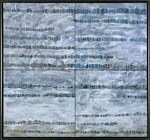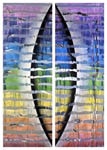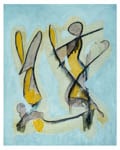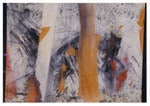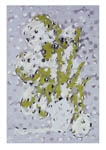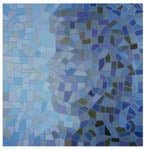Description:
Description: These paintings on canvas, Belgian linen and paper are mostly abstract paintings and semi-abstract paintings of the environment, sometimes including elements of landscape and figures completed during the 1980’s and 1990’s.
Artist statement about the works:
” I started out as a figurative painter because I felt attracted to that form of expression as I had a narrative story to tell in those days. There was a message I wanted to convey and over time, I found it best articulated through abstract and semi-abstract forms of expression. I only discovered this at a later time when I had immersed myself in abstraction.
During my early years as a painter, I had no concrete notion of what abstraction really was and only really gained valuable insights into the world of abstraction the more I worked with the materials (i.e.. paint and canvas) and the physicality of painting itself. It became apparent in the work that the abstract language of form became more important than the specifics of place or the rendering of the human form.
The change from figurative work to something more abstract resulted in a shedding of identity. It became literally an open field that I could explore. Instead of being confined by structured figurative elements.
I was assisted in discarding certain identities by other things taking place in my life, including a serious fire in my Melbourne studio in 1983. This fire totally destroyed my studio and seven years of work including paintings, drawings and prints. It was a devastating time for me, causing me to turn my attention inwards to a large extent. It was significant enough to cause me to take a sabbatical from art; the fire acting as a catalyst to reassess my life’s priorities.
After completion of a teachers training degree at the Melbourne College of Advanced Education and some extensive travel in the United States, I felt better prepared to return to my career as a professional practicing artist.
This ‘accident’ which had impacted both my personal and professional life had enabled me to mature overall as a person. Artistically, I became able to face truths about my work, changes that needed to be made, and now knew how to go about changing them.
The culmination of this maturing and the aforementioned revelation experience I had while looking for driftwood on a shoreline in Victoria directed me to the concern for environmental issues in my work and led to the discovery of medium that I used for over 10 years in my work – found objects. Later again this organically led on to my working again as a painter.
Does the change in artistic medium affect how I define myself as an artist? – Sandra Murray, in an essay (1991), said it more concisely than I could:
‘The successful artistic expression of an abstruse concept such as universality is difficult to achieve, but ultimately rewards both artist and viewer. It is what lies beyond the boundaries of abstraction and figuration that intrigues John Dahlsen and he has developed a unique visual language to articulate this. Dahlsen has only arrived at this crucial stage in his work after a course of exploration, both in a personal and artistic sense….’
Sandra Murray’s review particularly resonated with me. It is indeed, the intrigue and exploration and of course the medium I use at the time which helps define me and my work.
In later years a review of my ‘Contemporary Landscapes’ exhibition (1999) by Catharina Hampson states:
‘Years of abstract /figurative painting… inspired by living organic forms often monochromatic, smoothed transition to his present exhibition of works. … His flotsam collection acquired at the same time as his driftwood evolved into a further dramatic phase. … ‘Contemporary Landscapes’ his mammoth task – afforded him a freedom to demonstrate aesthetic possibilities which radiate vitality and joie de vivre, uncommon to most artists deeply conscious of environmental issues’.

